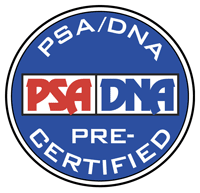Physicist and inventor (1882-1945) credited with creating and building the world's first liquid-fueled rocket. ALS signed “R. H. Goddard,” one page, 8.5 x 11, Clark University (Department of Physics), October 18, 1925. Handwritten letter to his former graduate student Russell B. Hastings, who had moved to New York to pursue further studies with Dr. John C. Hubbard (1879-1954), a physicist who taught at New York University from 1916 to 1927. In full: “I was glad to hear from you, and to learn that you are getting settled in New York. I am also glad to know that your work here has been a help, although I imagine that you will have to spend considerable time on the mathematical side of things. It is interesting to know that Starling covers all the electricity you will need. Things are settling down here into running form. Mr. Sleeper has the large room on the second floor, front, and shares it with a M. Bouillette, a young French exchange student who picked out Clark. His main work has been in engineering and physics. He holds the equivalent of an A.B. and A.M., has taught at the University of Paris, and has worked for a number of men such as Fabry. He will get used to things this year, particularly the language, and will then pass on to another University where he can get a Ph.D. He is working on an interrupted-current pattern here, and on hydraulics with Prof. Allen at the Tech. Mr. Goldblatt is getting the apparatus ready for some runs, and will use large copper blocks, in the hope of preventing melting. Please remember me to Dr. Hubbard.” In fine condition.
Seven weeks after Goddard wrote this letter, he successfully conducted a static test in the Clark University physics laboratory, in which a liquid-fueled engine successfully lifted its own weight in a static rack. The test proved that a liquid-fuel rocket was possible.
Three months later, on March 16, 1926, Goddard launched the world's first liquid-fueled rocket at his aunt's farm in Auburn, Massachusetts. He recorded the event in his diary: ‘The First flight with a rocket using liquid propellants was made yesterday at Aunt Effie's farm in Auburn. The day was clear and comparatively quiet…Even though the release was pulled, the rocket did not rise at first, but the flame came out, and there was a steady roar. After a number of seconds it rose, slowly until it cleared the frame, and then at express train speed, curving over to the left, and striking the ice and snow, still going at a rapid rate. It looked almost magical as it rose, without any appreciably greater noise or flame, as if it said: 'I've been here long enough; I think I'll be going somewhere else, if you don't mind.’ Esther said that it looked like a fairy or an esthetic dancer as it started off. The sky was clear, for the most part, with large shadowy white clouds, but by late in the afternoon there was a large pink cloud in the west, over which the sun shone. One of the surprising things was the absence of smoke, the lack of a very loud roar, and the smallness of the flame.’ The rocket rose 41 feet and flew a distance of 184 feet in 2.5 seconds before hitting the ground. The experiment proved ‘conclusively the practicality of the liquid-propelled rocket,’ as Goddard later wrote.
Goddard mentions two other graduate students, Lewis M. Sleeper (1903-2003) and Leo A. Goldblatt (1903-1988). Sleeper received his undergraduate degree from Clark University in 1925, and Goldblatt received his undergraduate degree in chemistry in 1925 from Clark University and, five years later, his Ph.D. from the University of Pittsburgh.
He also mentions a young French exchange student named Pierre Bouillette, who had worked with prominent French physicist Charles Fabry (1867-1945), renowned for his work in optics. In Worcester, Bouillette was working with Goddard and also with Professor Charles M. Allen (1871-1950) at the Worcester Polytechnic Institute, which Goddard refers to as “the Tech.” Allen was an 1894 and 1899 graduate of Worcester Polytechnic Institute and served there in a few capacities, namely as an instructor in mechanical engineering (1895-1902), assistant professor and professor of experimental engineering (1902-1909), and professor of hydraulic engineering (1909-1945). After his retirement, he remained as director of the college's Alden hydraulic laboratory. In 1925, he received the James Laurie Prize from the American Society of Civil Engineers.

This item is Pre-Certified by PSA/DNA
Buy a third-party letter of authenticity for
(inquire for price)
*This item has been pre-certified by a trusted third-party authentication service, and by placing a bid on this item, you agree to accept the opinion of this authentication service. If you wish to have an opinion rendered by a different authenticator of your choosing, you must do so prior to your placing of any bid. RR Auction is not responsible for differing opinions submitted 30 days after the date of the sale.